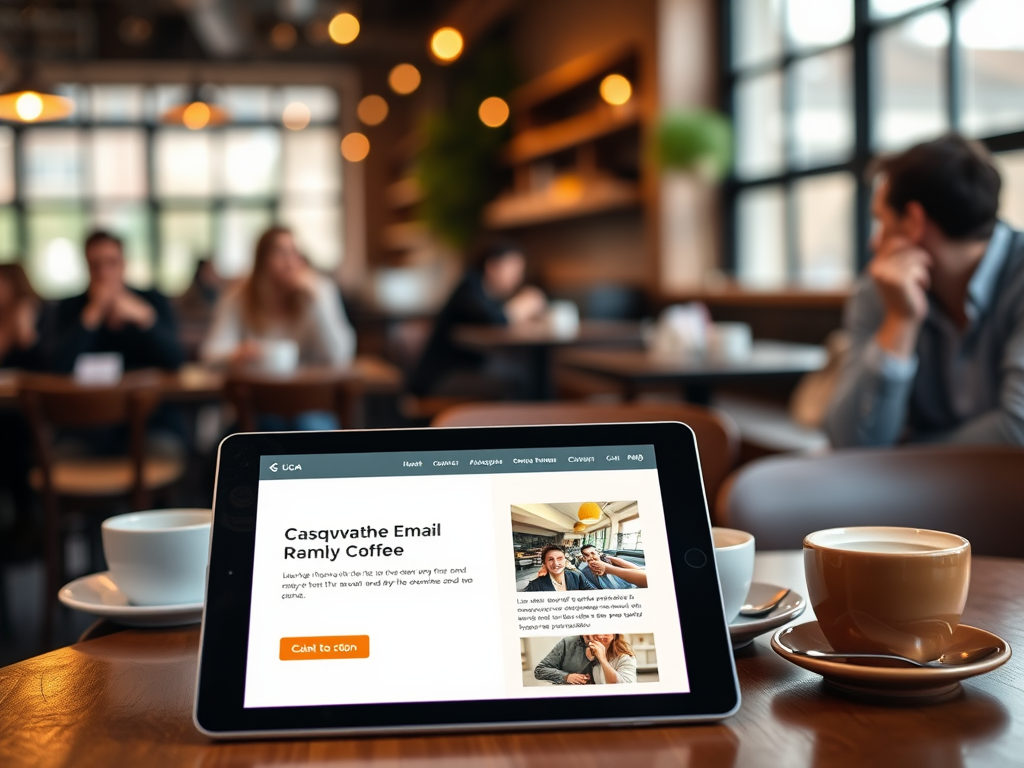In today’s fast-paced digital world, capturing a visitor’s attention is akin to striking gold. An email landing page serves as a gateway to achieving higher conversions, channeling potential leads toward meaningful actions. Whether your goal is to gather email addresses, promote a webinar, or sell a product, your landing page plays a pivotal role in the success of your campaigns. Crafting a high-converting email landing page isn’t just about attractive design; it’s about understanding user behavior and delivering value. Your landing page should resonate with visitors, sparking their interest and compelling them to take action. To effectively harness the power of email marketing, it is essential to execute best practices that enhance both user experience and conversion rates.
A high-converting landing page stands out by incorporating elements that appeal to the users’ emotions and logical thinking. By following key principles in design, copywriting, and optimization, marketers can turn a simple landing page into a powerful conversion tool. The journey of creating this page begins with understanding these principles and implementing best practices that create a seamless experience. This guide will delve into each of these facets, providing insights that can transform your email marketing outcomes. Below, we’ll take a detailed look at the fundamental aspects that can enhance your landing page’s performance.
Understanding the Importance of a Landing Page

In the realm of digital marketing, a landing page isn’t merely an extension of your website; it is a focal point of engagement. Designed specifically for a single campaign, the landing page serves to capture user interest and convert it into measurable action. It is crucial to recognize that each landing page should align with its corresponding email campaign, presenting a cohesive user experience. By delivering consistent messaging, you forge a deeper connection with your audience, enhancing their likelihood of conversion. This highly focused approach not only streamlines the user journey but also enhances tracking and analytics, allowing you to evaluate success precisely.
Key Elements of a High-Converting Landing Page

The design and content of a landing page can significantly influence your conversion rates. Effective landing pages incorporate several key components that collectively serve to create a compelling visitor experience. Below, we outline critical elements to focus on when designing your page:
- Compelling Headline: The first step to grabbing attention is a powerful headline that communicates your unique value proposition.
- Engaging Copy: Well-written, concise copy addresses the visitor’s needs and highlights the benefits of your offering.
- Strong CTA: A clear and action-oriented call-to-action is crucial; it should stand out and be easy for visitors to identify.
Compelling Headline
This element is paramount; it can determine whether a visitor stays on your page or leaves immediately. Ensure the headline resonates with your audience’s interests and curiosity. Combining a sense of urgency with value can further entice users to continue reading. For example, using phrases like “Limited Offer” or “Join Now to Benefit” can create that much-needed prompt. Remember, it should be easy to read yet impactful enough to draw in any curious passerby.
Engaging Copy
The body of your landing page must communicate directly to your audience, illuminating their pain points while offering a solution. In addition to persuasive text, incorporating bullet points can make key benefits stand out. You might also consider using subheadings to break up the text and maintain reader engagement. Here are some tips for crafting engaging copy:
- Know your target audience well.
- Use relatable language.
- Include calls to action throughout the content.
Strong Call-to-Action (CTA)
Your CTA should be visually distinct from the rest of the content. Options for your CTA may vary based on your goals – whether you want users to fill out a form, download an e-book, or subscribe to a service. Aim to highlight the benefits of taking the action you propose. A/B testing different CTAs can help you understand what phrasing and design resonate most with your audience.
Best Practices for Designing Your Email Landing Page
A well-thought-out design can make or break your landing page’s success. By adhering to best practices, you not only enhance aesthetic appeal but also improve functionality. Here are some practices to keep in mind:
- Focus on the User Experience (UX): A seamless user experience encompasses fast load times and mobile optimization.
- A/B Testing: Regularly test variations of your landing page elements to find the highest-performing combinations.
- Use Trust Signals: Incorporating testimonials, reviews, and security badges can build credibility and encourage action.
For designers, balancing aesthetics with functionality is key. Below is a table summarizing important design factors to consider when crafting your landing page:
| Design Factor | Description | Importance |
|---|---|---|
| Color Scheme | Use colors that reflect your brand and evoke the desired emotions. | Enhances user recognition. |
| Fonts | Choose readable fonts that match your brand identity. | Improves readability. |
| Whitespace | Utilize whitespace to create a clean layout. | Reduces cognitive overload. |
Optimizing for SEO
While conversion focuses on immediate action, long-term success often hinges on search engine optimization (SEO). Designing your landing page with SEO in mind is crucial for attracting organic traffic. By implementing strategies to enhance visibility, you can drive more potential leads toward your offer. Consider the following:
- Keyword Research: Identify and integrate relevant keywords that align with user search intent.
- Meta Tags and Descriptions: Create engaging meta titles and descriptions that encourage users to click through from search results.
- Internal Linking: Ensure proper linking to other relevant pages can help increase site authority.
Итог
Building a high-converting email landing page is not merely an art but a science that combines understanding human behavior with strategic design elements. A successful page embodies engaging copy, eye-catching design, trusted elements, and encompasses SEO best practices. By implementing these strategies, you can significantly enhance your conversion rates and effectively capture the interest of your audience. Each component plays a crucial role in guiding users from initial interest to ultimate action. Start prioritizing your landing pages, and you’ll likely see measurable improvements in your email marketing results.
Часто задаваемые вопросы
- What is the primary goal of an email landing page?
The primary goal of an email landing page is to convert visitors into leads by persuading them to complete a specific action, such as signing up for a newsletter or downloading a resource. - How many CTAs should I include on my landing page?
It’s best to have one clear and compelling CTA on your landing page to avoid confusing visitors and to drive them toward a single action. - What are some effective ways to drive traffic to my landing page?
Effective methods include email marketing, social media promotion, SEO, paid advertising, and collaborations with influencers. - Can I use the same landing page for different email campaigns?
While it’s possible, it’s usually more effective to tailor landing pages to specific campaigns to align with the unique messaging and offers. - What tools can help with landing page design?
Popular tools include Unbounce, Instapage, Leadpages, and WordPress plugins that offer customizable templates for landing pages.
